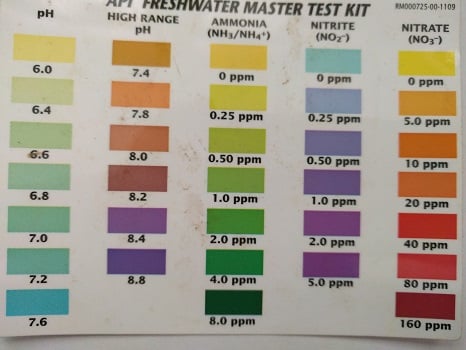When it comes to nitrate concentration, it is highly recommended that you keep levels to below 40 ppm. If you are keeping more fragile species, then you should aim for under 20 ppm. With that said, some plants do better if you have a higher nitrate concentration.
To see how you can increase nitrates in your aquarium, you can take a look at this article from Aquarium Blueprints.
1. For the first tip, you can try doing less water changes. By doing so, the nitrates should be able to build up slowly after time.
With that said, you should do a water change immediately if you have more than 0 ppm of ammonia and/or nitrites as both of these compounds are very toxic in even small traces.
To see when you should do a water change, we recommend testing your water beforehand. If you have 0 ppm of ammonia, 0 ppm of nitrites and less nitrates than what you are aiming for, then you should avoid doing a water change. With enough patience, you should be able to increase the nitrate concentration in the aquarium to your desired level.

If you have more than 0 ppm of ammonia, 0 ppm of nitrites and/or more nitrates than your target, then you should swap out the tank water.
2. If you clean your filter and/or vacuum the substrate during every water change, then you can try skipping out on these cleanings.
The organic wastes built up on your filter and bottom of the tank will be converted to nitrates over time due to the nitrifying process.
As we stated above, as long as 0 ppm on ammonia and 0 ppm of nitrites, you don’t have to worry about the health of your fish. Therefore, you can leave the organic wastes in your tank.
3. You can also try adding more food to your tank. To do so, we suggest that you only add a bit more in the beginning so that you don’t cause any sudden swings to your water parameters.
If you add too much at once, then your biological filtration may not be able to keep up, leading to spikes in ammonia and nitrites.
Instead, you should slowly increase the portion sizes every few days in order to add more nitrates.
4. Of course, you can also add more fish to the tank as the increased bioload should lead to more organic wastes.
5. Moreover, you can add more nitrates by using aquarium plant fertilizers.
A product such as Seachem Flourish contains nitrogen. So, by adding the solution, which includes other supplements and macro-nutrients, you should end up having more success when it comes to plant growth.

You can read more about Flourish in our review article.
6. If you have a deep substrate and/or using special filter media (such as the Seachem Matrix or Biohome Ultimate) that are designed to keep nitrate levels low, then you can try removing these to see if you are able to get more nitrates.
For the substrate, you should aim for a depth of less than two inches. If it is deeper than 2 inches, then nitrate-consuming bacteria will prevent your nitrate levels from increasing.
